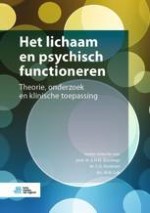Samenvatting
In dit hoofdstuk richten wij ons op de rol van het lichaam bij alexithymie, een transdiagnostisch fenomeen met een fundamenteel belang voor de klinische praktijk. Alexithymie kent zijn oorsprong in de praktijk, waar het werd geïntroduceerd als een klinische beschrijving bij patiënten met een beperkt vermogen tot het identificeren en onder woorden brengen van emoties, een concrete denkstijl evenals een arm fantasieleven. Alexithymie vindt steeds meer zijn plek binnen het domein van de cognitieve en affectieve neurowetenschappen, waarbij het wordt gezien als een neurocognitieve verstoring van verschillende processen die onder invloed staan van aanleg en omgeving. Verstoorde emotionele gewaarwording en de gewaarwording van interne lichamelijke sensaties (interoceptie) staan daarbij centraal. Wij beschrijven drie ‘levensfases’ van het begrip alexithymie, waarbij veel aandacht is voor de nieuwste ontwikkelingen en inzichten. De gangbaarste diagnostische instrumenten worden besproken, en we geven enkele aanwijzingen voor de psychotherapeutische behandeling van alexithymie. Ten slotte benadrukken we de noodzakelijke verdere ontwikkeling van de kennis omtrent neurale processen die ten grondslag liggen aan alexithymie.
